
We did it! Sophie and I published a children’s chapter book together! I am super proud of it and us, and I think your kids are going to love it! Presenting: The Quest for the Magical Ingredients.
It is a book for imaginative, creative, and adventurous readers who love a good dose of both nature and magic. And it has beautiful colour illustrations throughout by Sophie!
It probably hits the spot best for the 5-9 year-old range, but it will also likely appeal to anyone 4-11 years (depending on reading ability and whether it is being shared as a read out-loud or with siblings of different ages).
For sale on Amazon (paperback and Kindle ebook).
The Quest for the Magical IngredientsHere are the back cover, the ‘About the Authors’ and some sample pages:

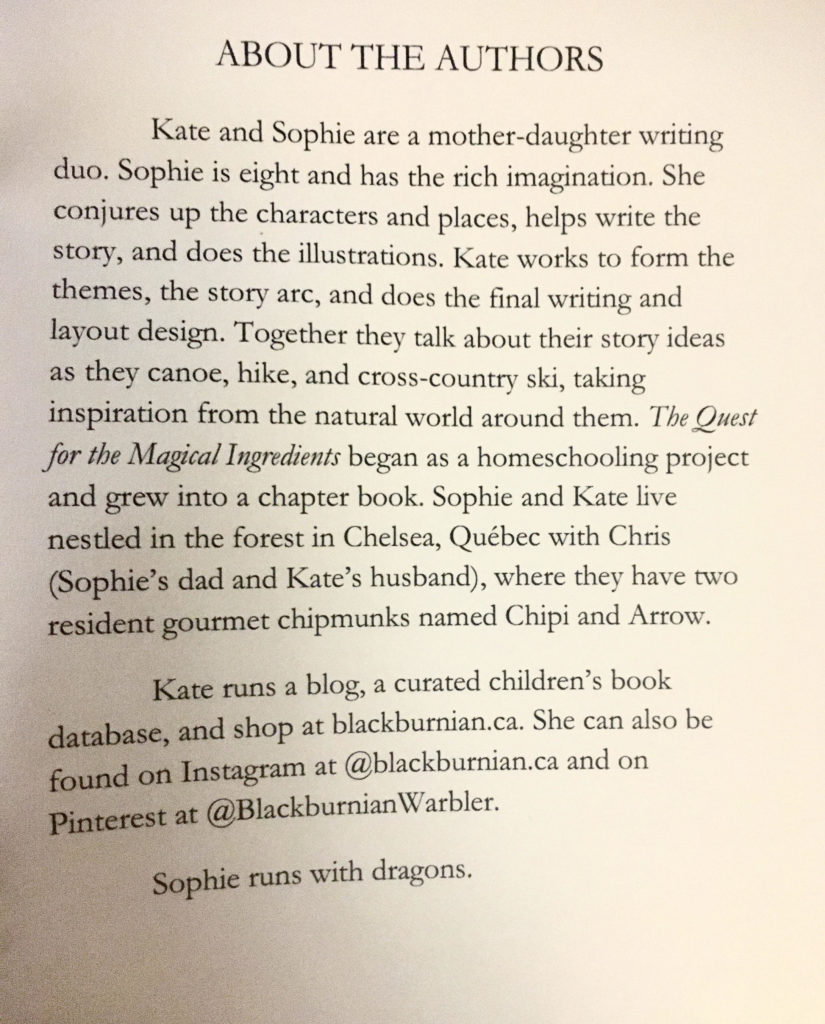
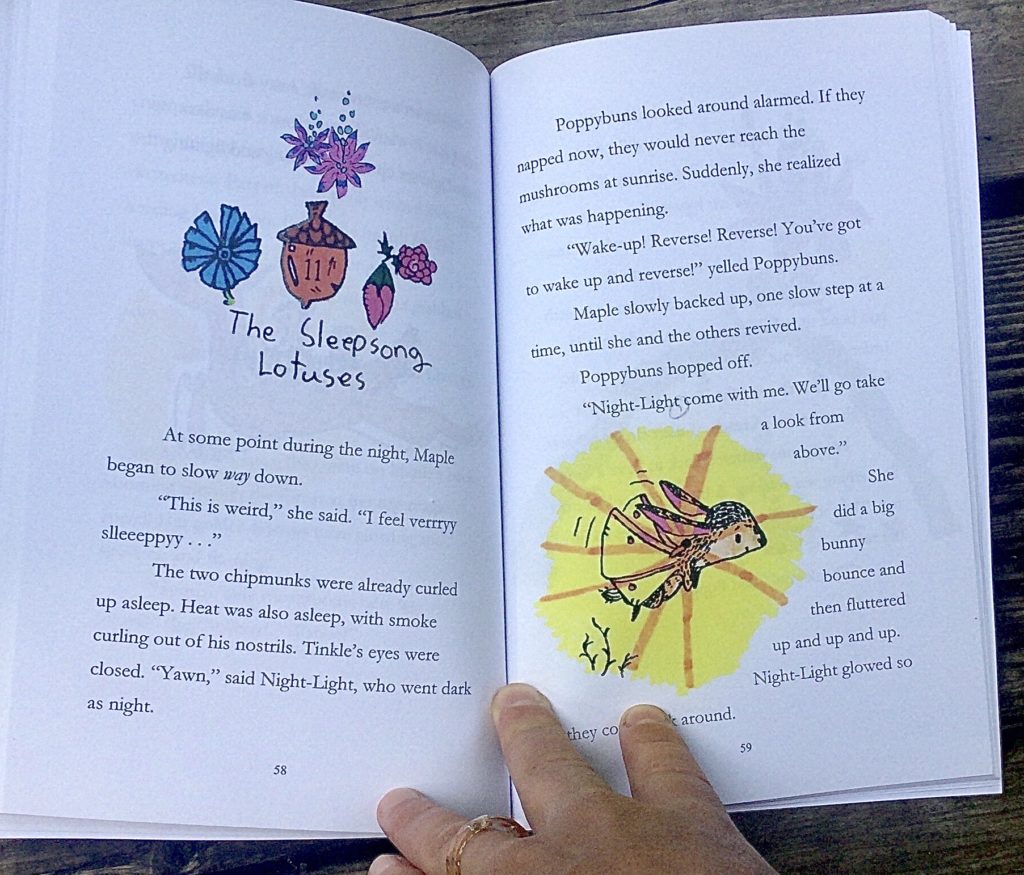
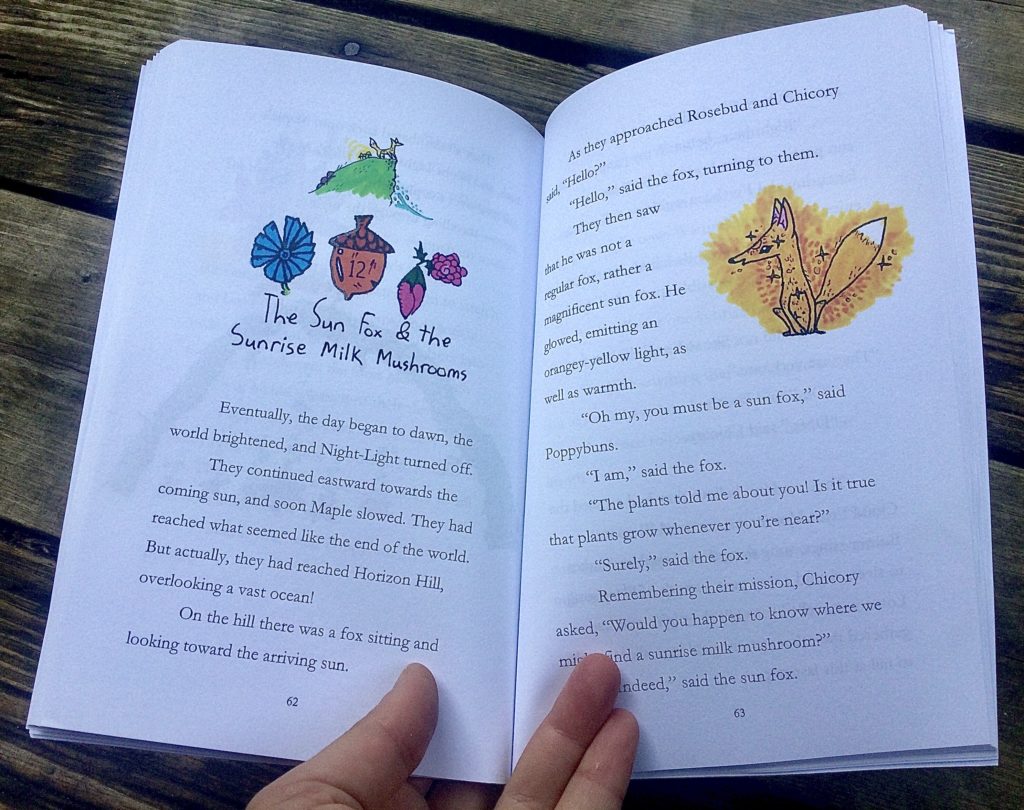
A mini-interview with Sophie (artist and author):
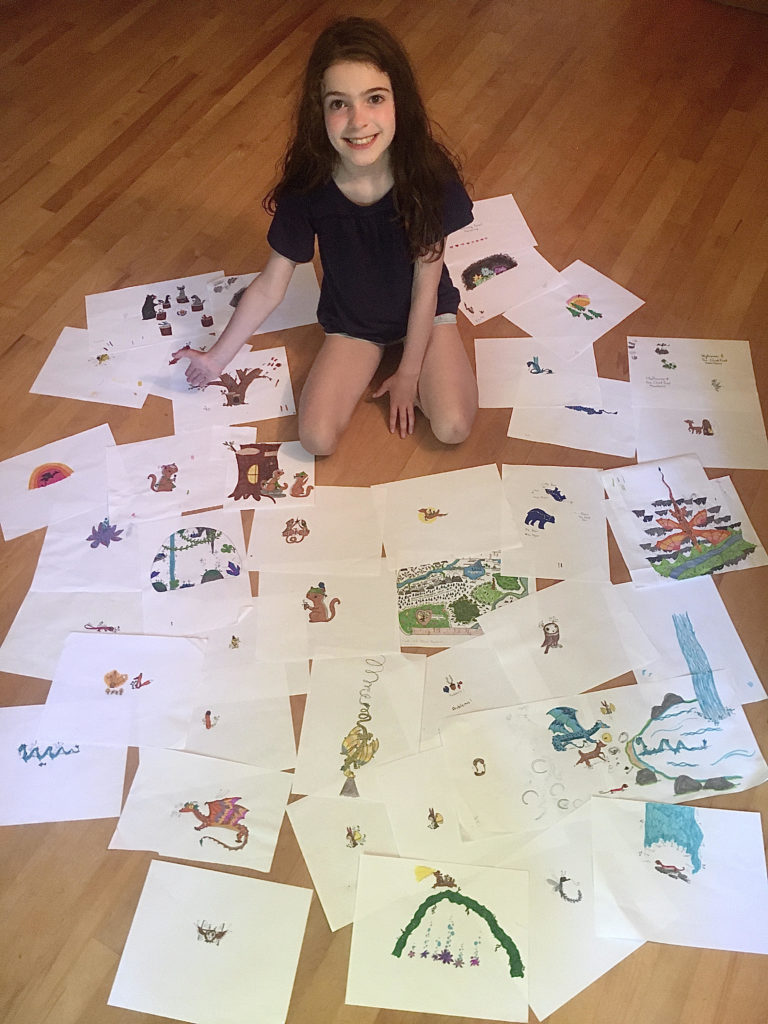
How do you come up with the characters and places?
I just come up with them, and some are inspired by nature. I was watching chipmunks a lot, so that helped create Rosebud and Chicory. Night-Light was inspired by a bright orange caterpillar that I rescued from the water.
What tools did you use to illustrate The Quest for the Magical Ingredients?
I used 0.1mm and 0.05mm black pens, but I realized that I like the 0.05mm black pen best. I like to be able to add detail, and that is the thinnest pen we have. For the colour, I used my markers (a complete mix). Sometimes I didn’t have the exact colour I wanted, and once, we ran out of a colour because the marker died, and we had to find another one.
What was your favourite character to draw?
I liked drawing Maple, the golden-hooved deer, a lot. She didn’t give me any trouble.
What was the hardest character to draw?
Rosebud and Chicory!
Do you have a favourite illustration in book?
I like the ones with Maple. I also like the one with SkyRoamer arriving because she makes a corkscrew landing and that was fun to draw. Also, the view of SkyRoamer from above was cool. In general, aside from the story, dragons are my favourite to draw. I have drawn A LOT of dragons.
How did you feel when you got to hold the actual book?
Happy. It is much cooler to hold an actual book than to see the pages flip by on the computer.
Below are a few favourite illustrations from the book:


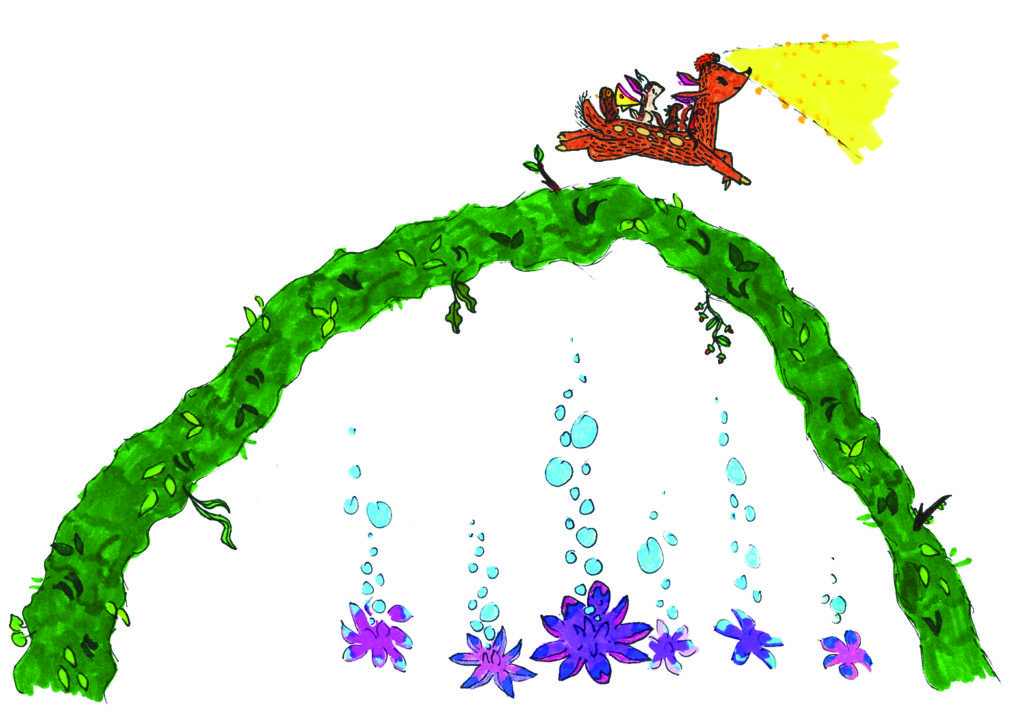
Illustrations ©Sophie Ballantyne-Anderson (The Quest for the Magical Ingredients)
Read on below for more about our book journey…
It turns out that writing a book is a lot of work, and that is just the beginning of it. I am glad I didn’t know how much work it was, or we may not have accepted the entire challenge. The writing part was fun, especially since Sophie and I were working together. The early planning and writing stages were our favourite parts. Then there were sticky bits to work through, and things that have to change to make things work.
We worked on this all school year off-an-on. Sophie had begun talking about the characters in August while we were on a canoe trip, and then we decided to keep going with the characters and write a story. About once a week, we’d go for a hike or ski, talk about the characters and story, and then come home and write a bit.
Throughout the process, I often thought that the parent-child writing combination is a good idea. Sophie knows what interests her as an eight-year old, and has so much creativity and imagination with her characters and places. I worked to make sure there was a plot and themes, that things tied together and made sense, and did the final writing (Sophie did her own version as a Gr. 3 would).
When the story was done, I was flagging and was lucky enough to have a good friend take it and give it a good edit. The energy and care she put into it gave me renewed energy to keep going with it. It was so nice at this stage to have Sophie to read changes to, bounce ideas off of, and consult with. At this point, during the writing edits I was doing, Sophie had moved on to doing the illustrations.
When I was done with what I thought was the final draft, we loved the book, and I looked into getting it published. I didn’t try that hard though. To begin with, we don’t have a literary agent (I had read it is tough to get one), and not many publishers accept unsolicited manuscripts. I was able to find three smaller publishers that were accepting manuscripts, but I didn’t hear back. This was expected, and I wasn’t too disappointed. Everything I had read said to prepare to be rejected. Also, I read that publishers generally want to choose an illustrator, and Sophie and I wanted her to illustrate the story. Also, if you are lucky enough to get a publisher, the timelines can be significantly extended (sometimes years), and I wanted Sophie to experience holding the book so she could feel the satisfaction of seeing a project through. We also wanted Sophie and her friends to enjoy the story before they got too old for it.
I began to look into self-publishing. Luckily, with services like Kindle Direct Publishing (KDP) authors can get a really professional-looking book printed-on-demand, and placed on the Amazon marketplace where it is sold and distributed by Amazon. That means the author(s) don’t have to invest a bunch of money upfront and then possibly lose a lot of money if the books don’t sell, or spend their time dealing with finances and distribution. Furthermore, I had joined the Facebook group 20Booksto50K on the recommendation of a friend, where self-published authors were posting about their self-publishing journey, some of which were hugely successful and inspirational.
Of course, self-publishing has significant downsides, like not having a team to do the editing, layout and design (I spent so much time in Photoshop!!), and maybe most of all, the marketing. Self-published authors can’t get their books into a big bookstore like Chapters/Indigo, and there aren’t many English language small bookstores anymore, so you have to rely on people who buy on Amazon. Also, because you aren’t dealing with the printer directly, some things are not in your control, like requesting FSC-certified paper, vegetable inks, or foil on the cover (although I’ve read this is possible in Australia via KDP). I have to say the books we bought via Amazon.ca were printed in Bolton, ON, and the colour quality was excellent. Anyways, for us, on-demand was mandatory.
Now I am stuck on how to get the book out there to kids outside of our friend and family circle. I don’t know anything about marketing (my background is in ecology and outdoor and experiential education), so maybe I’ll learn some things. I may have to make a TikTok account (🥴😵💫)—apparently #booktok is a big thing. Also, we had the bad luck of a bad-bot leaving a horrible review on our book immediately. It/he never read the book, and it’s/his name is Hugh Jaynus (read: huge anus), so please don’t pay attention to it’s/his review!
Here are some ways we can support self-published authors:
- Buy the book or ebook.
- Buy the book for someone else. Books are great gifts, and gifting a self-published author means the child is unlikely to already own the book.
- Leave the book a good review if you liked it. You can just click the number of stars you’d give it or additionally write a review.
- Share the book. Tell your friends about it. Recommend it to people. Share and post about it on social media.
- Request your local library carry it.
- Send encouraging words to the author(s)/illustrator(s).
We are already planning-out our winter book! We are imagining having one book per season, each with different main characters and a new cast of Magics! I’m not sure how realistic it is to think we’ll be able to keep producing the books with a return to traditional school and the workforce. I am sure of how grateful I am for our homeschooling years (though I don’t think the term ‘homeschooling’ is exactly the right word). Anyways, we will try because we enjoy it, so stay tuned!
Happy reading, Kate
